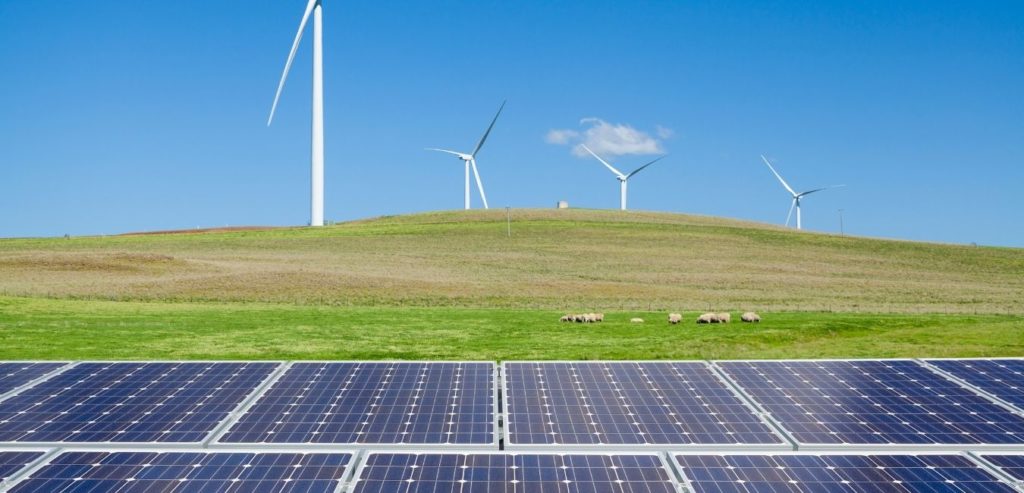New Found Leadership on Climate Action
The Climate Leadership and Environmental Action for our Nation’s (CLEAN) Future Act was introduced on March 2 by leaders of the United States House of Representatives Committee on Energy and Commerce. It outlines a new national energy standard and set of goals, including decarbonizing the country, implementing a 100% clean electricity standard (CES), and reaching net zero greenhouse gas (GHG) emissions by 2050.
The legislation proposes spending $565 billion over the next ten years to reach these goals, which would not only create millions of jobs but also allow Americans and the federal government to work together to take definitive action to protect the health and wealth of the country. A preliminary draft of the bill was introduced in January 2020 after two years of planning and 27 hearings, and the official proposal reflects updates made based on stakeholder input, expert testimonies, and several other provisions that have been signed into the law in the interim.
What This Means for the Renewable Energy Sector
President Biden has called specifically for the country to reach 100% CES by 2035, which this proposed bill would require. This means that all retail electricity providers will have to demonstrate that they are providing an increased supply of clean energy to their customers beginning in 2023. By 2030, they will be expected to reach 80% clean energy, which will help keep them on track for the ultimate 2035 goal of 100%.
If signed into law, the bill would also give the federal government the power and funding to create an efficient energy transmission and delivery system that would facilitate the achievement of these goals. It would also provide funding for other grid infrastructure improvements, the creation of microgrids, and other resources for the distribution of energy. All of these elements would improve energy resiliency within communities and help reduce pollution.
The bill also targets the building sector, which will in turn impact the renewable energy sector. It would create national energy and water savings targets, and attempt to reach them by improving the efficiency of buildings (both new and existing) and the appliances and equipment that consume electricity within the buildings. It would also improve building energy codes, to reach a goal of having all buildings zero-energy-ready by 2030. Finally, it would provide funding for the improvement of energy and water efficiency in schools, homes, and municipal buildings to make these goals reachable.

Other Items Addressed in the CLEAN Future Act
The proposed bill also outlines a plan wherein individual states would have flexibility as far as their policies, plans, and priorities regarding the net-zero GHG transition, so long as they meet the 2050 target and interim federally mandated goals. Each state would be expected to submit its own plan of action to the EPA for approval, with the option to incorporate the EPA’s model strategy into its own. $200 million in funding would be set aside for states to use in formulating their plans.
Accelerating Sustainability
The bill would also dedicate $100 billion to establishing and funding a Clean Energy and Sustainability Accelerator to facilitate the national transition to clean energy. These funds would provide financing for clean energy technology development and implementation, decarbonization efforts, power grid, and green transportation improvements, and building and agricultural efficiency improvements. This program would be modeled after the Green Bank program which has already been implemented in many places across the country, and it would fund the development of Green Bank branches in areas where they are still needed.
It also proposes to establish an Office of Energy and Economic Transition, which will manage an interagency effort to support workers who are impacted by the transition to clean energy. This would support communities and individuals who lose revenue as a result of fossil fuel employers being phased out and assist them with finding new jobs within the clean energy sector.
A More Equitable Place to Live
Finally, the bill places a focus on environmental equity. It would target improvements such as replacing lead water lines, cleaning up brownfields, creating stricter coal ash disposal rules, and repealing exemptions that are currently in place for oil and gas production companies. This portion of the bill is designed to provide equal access to clean energy and safe water and end unfair advantages for the fossil fuel industry.
What Happens Next
Now that the bill has officially been introduced, the legislative process will continue with hearings that will take place over the next several months. In the meantime, if you wish to voice your opinion to your legislature in DC, you may do so here.


